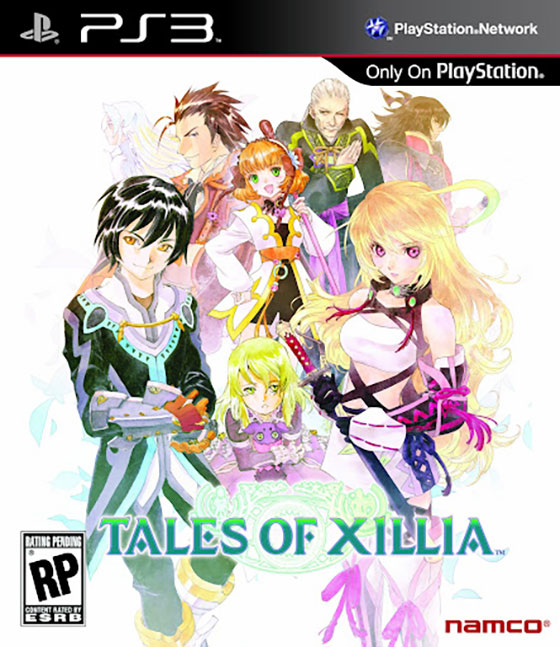RETRO-spective: ‘Tales of Xillia’ Review

After Tales of Graces F, the next game chronologically was Tales of Xillia which was mostly released to celebrate a landmark for the series. Tales of Xillia was made for the 15th anniversary of the franchise. As a result, there are a lot of touches to the stories that came before it but the question is: Does this come at the expense of the game’s own?
Tales of Xillia has a different form of storytelling as you have two different perspectives to experience: Jude or Milla’s. However, the story begins with the mysterious Milla Maxwell breaking into a research facility in order to destroy something called the Lance of Kresnik and Jude just happens to witness her breaking in. And instead of going home like he probably should, Jude follows her in and the events that follow send them all around the world of Rieze Maxia in order to stop a much bigger plot than they could have ever imagined.
As mentioned above, you have two campaigns to choose from. While the story largely remains the same, certain cutscenes and revelations play out differently depending on whose story you’re following. Some things that Jude finds out later in the plot might already be long known to Milla. Additionally, each campaign has their own unique segments because Jude and Milla aren’t together all the time. For example, there’s a part where Milla is captured and has to break out only for Jude and co to appear at the end and it’s only by playing Jude’s story, you find out how he arrives there. For a first playthrough, I’d recommend Jude’s because it’s more inclined for a general audience and those who aren’t well versed in the series yet. Milla is more involved with the bigger picture events of the plot which only make complete sense on a second run from knowing things in advance. And as a side note, I know that many people have issues with the performance of Milla’s voice actress because she’s not the most emotive, which stands out like a sore thumb in a cast full of strong voice actors so Jude is the stronger first choice if you want to be invested much more quickly.
Outside of the leads, how is the story itself? It’s less predictable than Tales of Graces was but if you are a fan of the series then you’ll definitely get a sense of deja vu with the twists and turns that Tales of Xillia has. This is intentional as this is an anniversary title so there are parts of the plot that are throwbacks to previous games. They aren’t things that newcomers would see coming but fans will have already noted that Milla’s last name is Maxwell and know what that means before the game delivers that exposition. The first two acts of the game are solid, have great character development and have a lot of moments that are quite jaw-dropping. However, the third act in comparison feels very rushed. Tales of Xillia did have a rushed development time so it could come out for the anniversary and this is where it’s most apparent. You have this really interesting area for the third act but you barely get to know it and what it’s like before the credits roll. This is probably the main reason that this game got a sequel because there was a lot of potential that never got to be fully explored and while the characters get decent resolutions in the game itself, you can feel that there is more story to tell.
The characters are more three-dimensional in this entry. Jude is the do-gooder and awkward teen lead but I think that unlike Asbel where the goody two shoes character was played very idealistically, it’s more real with Jude because he gets a lot of flak from others for it and it actually gets him into more trouble than out of it. That said, Jude goes from a directionless teen who just seems to follow Milla because it feels like the right thing to do (and also he has an obvious crush on her) to a strong young man who finds his own purpose and reason to fight for the world. Milla’s development is more subtle because she’s very driven and wise but has also been sheltered from the world at large so she has a lot to learn about being human from enjoying simple pleasures like a good meal to internal conflict or dealing with handicaps. By the end, she isn’t doing things simply because it’s her mission but because she wants to be the ideal that others expect her to be.
The other characters of the party are Alvin, Elize, Leia and Rowen. First one you meet is Alvin who you know is sketchy as soon as you meet him even though he has his charms. He seemingly helps out Milla and Jude because he sees an opportunity as a mercenary but eventually it is revealed he has his own ulterior motives that get more devious and hurtful as you go on. That said, he’s not completely irredeemable because he does have genuinely good reasons for what he’s doing and you can see he’s really his own worst enemy and that he cares for everyone in that party despite his tendencies to look out for himself. Elize starts out as a withdrawn girl with strong magic artes and her doll-like companion, Teepo, does most of the talking for her but eventually she finds her own voice and confidence. Leia is a childhood friend of Jude’s and in comparison to Jude, she’s much more extraverted and while she does have a crush on Jude, it’s not the cliched thing of having both characters being unable to spit it out. This is completely unrequited and she knows it is so her arc is about healthily letting that go. Lastly is Rowen who is the oldest in the party and while he appears to be a simple butler, it’s clear he has amazing battle skills and his arc is about facing up to that part of his past and the consequences of running from it. While I won’t delve into the villains, I will add that I like how the final boss in this isn’t really a true antagonist but instead feels like they are driven to do what they’re doing for understandable reasons.
Each Tales game has its own combat gimmick and for Tales of Xillia, it’s linked artes. In battle, characters can link with each other to deal with enemies and each character comes with their own unique skill like Jude’s snap pivot or healer ability. The idea is you link up to unleash strong combos on opponents and each pair can unleash special attacks as the bar builds up. You can also change characters pretty easily during a battle if needed and all of this contributes to a system that feels very real. Leveling up is also a bit more developed than normal.
While you do level up in the traditional sense, Tales of Xillia introduces Lilium Orbs to make the whole affair a bit more involved and more player dependent. After each level up, you’re given points that can be used on a massive spider-web grid and these points can go towards stronger stats (like attack strength, movement speed, magic power) or gaining new artes to use. It’s built in a similar way to Final Fantasy X’s Sphere Grid where you can tailor each party member to the way you want them to function in battle. Another thing that you have to watch out for is skills. They aren’t used in battle but serve as reinforcements of what you get from the Lilium Orbs like strengthening characters against certain attacks. Skill sets also require points so the Orb and skills intertwine with each other and if used correctly, you can really dominate a lot of battles.
Next is the equipment which is also a bit different than what you would expect in a JRPG. Usually, you have to visit new towns or backtrack to get stronger items or specific items but in this case, you’ll have to put in a bit more work to get your new weapons. In Tales of Xillia, you donate items found in battle, while exploring or you can use money to increase the wares. There may be a bit of grinding involved if you want your stores to advance enough especially near the end game when the tougher and optional bosses and dungeons come in but again the choice is completely yours about when and how you choose to do it.
Tales of Xillia is also filled with subquests which require a lot of backtracking through various towns and locales. This game doesn’t have a world map but it does have a fast travel system so going back and forth is never a problem. The main story is quite linear but sidequests are everywhere and not as easy to find so you will have to go and talk to people that you may have already met in previous areas. It can be a chore at first glance but personally I recommend doing them especially since the sequel mentions events from these subquests. It’s also important to remember that you can fail some side quests if you advance too far in the main story (and some can only be continued after certain plot twists) so the way I managed to do as many as I did was by going through the entire list of locations and talking to every person I could find before I went and did the next main quest.
Much like Tales of Graces, the graphics definitely show their age. The overworld is largely very empty when you’re travelling, the loading times while quick for their time are probably outdated by now but the game is largely built in-engine (minus a few stellar anime cutscenes) which is an impressive feat. These games are never known for their graphical prowess but even by PS3 standards, it’s not the strongest.
I ended up replaying Tales of Xillia multiple times on the PS3 when it came out. It’s actually one of the few games where I actually beat the post-game dungeon and defeated all the special monsters because I was having so much fun. New Game Plus is the perfect incentive to replay it because you can get stronger so much easier depending on what you choose to keep. It’s not better than the likes of Symphonia, Abyss and I personally prefer the Xillia sequel over this one (which isn’t always a popular opinion but I’ll explain it when I get around to reviewing it). What Tales of Xillia does very well is taking these familiar aspects from previous games in the series and adding its own unique spin alongside its compelling characters, interesting story and highly developed gameplay.











































